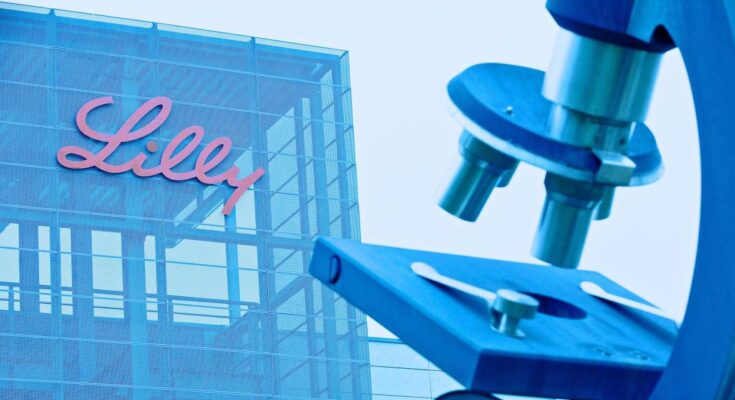In Sesto Fiorentino, on the northern outskirts of Florence, the US multinational pharmaceutical company Eli Lilly produces insulin used by diabetes patients in sixty countries. Eli Lilly has had a factory in Tuscany for more than half a century, and according to the factory’s president for Italy Elias Khalil intends to stay there for a long time, given that he invested 750 million euros in the factory, but this is not an isolated case.
In fact, in recent years, Tuscany has become an ideal environment for pharmaceutical companies, for at least two reasons: because there are thirteen drug research centers and three highly competitive universities in the fields of medicine, biology and pharmaceutical chemistry; and because this research can be transferred to companies, this is not easy in Italy, where the academy does not always have many points of contact with the world of work.
In recent years, the pharmaceutical sector has become increasingly important for the Tuscan economy. In 2024, pharmaceutical exports from the region will be worth 11 billion euros (up 33 percent compared to 2023), which is higher than traditional sectors such as textiles and leather goods, for which Tuscan companies are known and appreciated throughout the world. For a more concrete comparison, 11 billion is a fifth of all Italian pharmaceutical exports.
Apart from that, Italian exports cannot be ignored either. The pharmaceutical sector is currently a fundamental part of what is called “made in Italy”, along with fashion, mechanics and agri-food, and exports have grown significantly in recent years. This growth was mainly supported by Tuscany, and by Lazio, the only region that exported more.
In the Tuscan pharmaceutical sector there are companies that have very different histories, in terms of size and specialization. There is a first group of companies that experts call “driving companies”, namely companies that in one region act as a driving force for other companies. Besides Eli Lilly, there is Britain’s GSK, which has a large factory in Siena to produce vaccines, and Menarini, Italy’s largest pharmaceutical company, which between Florence and Pisa is working on some of the most promising oncology drugs for breast cancer, myeloma and some forms of leukemia. These three companies have billions of dollars in turnover, research centers and consolidated relationships with the universities of Pisa, Siena and Florence. Over time, these drugs were able to move from safer but increasingly less profitable areas of the market, such as antibiotics or painkillers, to the treatment of emerging pathologies, such as obesity, immune system diseases, neurological diseases, and tumors.
Among multinational companies there are also those that choose to locate only part of their supply chain in Tuscany. Japanese group Takeda, which has a turnover of 25 billion euros by 2024, packages albumin, a protein used to treat various liver diseases, in Pisa. It is easier here than elsewhere to find the right personnel for the sterile process, which is fundamental to the packaging.
However, all these large groups have a structural limitation: logistics. Distribution flows through Milan and Rome, where medicines have historically played an important role and where structured logistics centers already exist. For those producing in Tuscany, this means higher costs and longer delivery times, resulting in more perishable medicines. To solve this problem, a digital logistics hub project was started in 2018 which will be built in Guasticce, near Livorno. The project will cost around 60 million euros and will manage the flow of pharmaceuticals from across the region, through a public-private collaboration involving companies such as Eli Lilly, Abiogen, Aboca, Molteni and Galenica Senese, along with transport operators such as DHL and Maersk.
However, in March 2024, Eli Lilly, which was supposed to guarantee half of the operations, withdrew from the project and this ruined everything. This problem also has a judicial follow-up, because at the end of 2024 one of the logistics operators that will participate, namely BCUBE, is suing the manufacturing company for not fulfilling pre-contract obligations.
Apart from multinational companies, in Tuscany there are several family businesses that have recently become multinational companies. Kedrion, for example, was founded by the Marcucci family and is currently controlled by the British sovereign wealth fund and the Abu Dhabi sovereign wealth fund. He conducted research on plasma derivatives, which are obtained from human plasma which is the liquid part of blood, and on so-called “orphan drugs”, which treat rare diseases in which the pharmaceutical industry usually invests little due to low economic returns. Last year the company had a turnover exceeding one and a half billion, and increased investment spending by 40 percent.
A special aspect of the Tuscan sector is that many companies, which are usually smaller but have strong roots, produce medicines for other companies (“on behalf of third parties”) who may lack adequate equipment, or who prefer to optimize time and costs. What is entrusted to these companies is production testing, where for example the purity and composition of the active ingredients are studied, and “pilot” production is started in small quantities. For medium-sized pharmaceutical companies, working on behalf of third parties is a way to optimize the use of plants and add a source of income to the production of their own brands. This is the path chosen by Abiogen, which in Pisa specializes in injectable drugs for pain therapy. Part of its turnover, which in 2024 will be 168.5 million, comes from there.
According to researchers who have studied the sector, the Tuscan district has two other peculiarities: the large size of pharmaceutical companies (205 employees on average, compared with 190 employees in Lazio and 145 in Lombardy) and a low percentage of start-ups. There appears to be an inverse relationship between these two data, as if the presence of large, consolidated firms discourages the formation of small firms rather than acting as a driving force. In reality, the explanation is mainly related to finance: investment to set up a start-up company in the pharmaceutical sector is very high, and in Tuscany venture capitalthat is, risk capital that finances those who cannot offer the collateral required by banks, is less active than in Lombardy and Lazio. Fewer businesses are being founded in Tuscany due to the difficulty of financing them in the beginning.
A recent push came from the PNRR, with 110 million in funding to strengthen applied research in pharmacology in the region. To simplify the financing procedure, which with European funds is long and complicated, a call mechanism defined as “cascade” has been designed, i.e. the consortium that manages all the financing – called the Tuscany Health Ecosystem and the Tuscan universities participate – divides it by issuing small calls aimed at startups, laboratories and companies. Selected projects then receive contributions quickly, and require limited reporting on each project.
GSK factory in Rosia, in the province of Siena, vaccine production site (GSK)
Another thing that is done to encourage the birth of new businesses is to strengthen the “network of facilitators”. They are entities that connect the corporate world and universities and enable those conducting basic research to convert it into industrial research. The Toscana Life Sciences Foundation, founded on the initiative of the Region, is an example. At its campus in Siena, the university offers laboratories and services for the development of medicines, vaccines and diagnostics. Currently they manage 21 research projects with European funding of 27 million euros. In about 20 years, several start-ups were born and are now a stable part of the district.
Among them is VisMederi, which was founded in 2009 by a group of researchers from Siena and currently employs 250 people: it is one of Europe’s main laboratories in vaccine quality control and last year started a new research structure at Colle Val d’Elsa, in the province of Siena. Another case is Exosomics, a startup active in advanced oncology diagnostics that was recently taken over by the multinational company Lonza: the company developed a test based on exosomes, small vesicles released by cells and useful for identifying tumors early.
According to Farmindustria, the organization that brings together companies in the sector, around 8,000 people work in Tuscan pharmaceutical companies. Plus 9,400 other related industries, namely complementary services and activities, ranging from machine maintenance to transportation.
Generally these companies are very technologically advanced, especially those that package pharmaceuticals, a practice that has changed greatly in recent years. For decades, companies have shipped finished batches to large, centralized warehouses, where labeling, filling and final preparation for distribution take place. Today we are instead turning to solutions closer to the site of production, because new biological drugs, obtained from living organisms (cells, bacteria, yeast) or from their products, rather than from traditional chemical synthesis, must reach the market more quickly. This means we need machines that are more flexible, able to work on a wider range of formats and adapt to more varied demands. It was this need that gave birth to Pharma Integration, for example, a Siena-based company that designs and creates robotic and modular packaging systems, designed to reside in or next to production plants.



